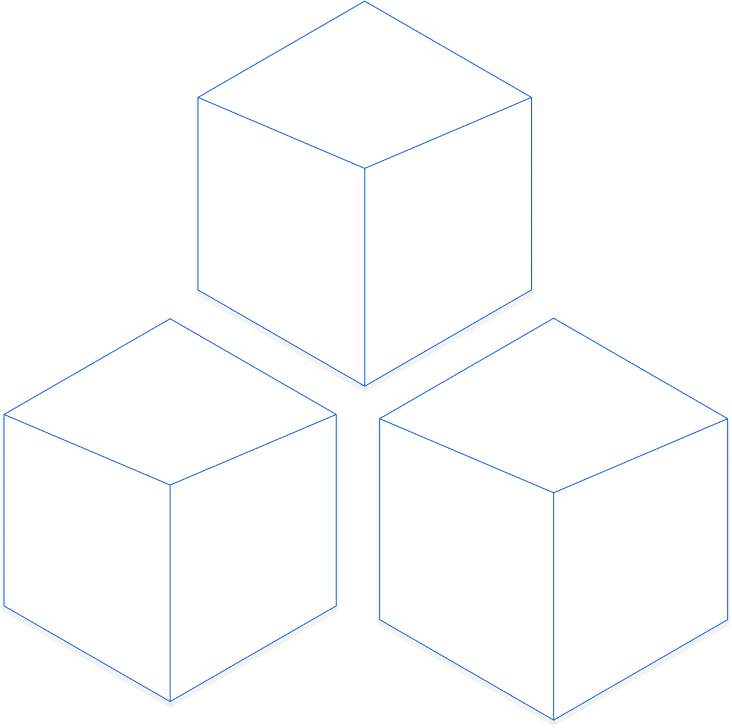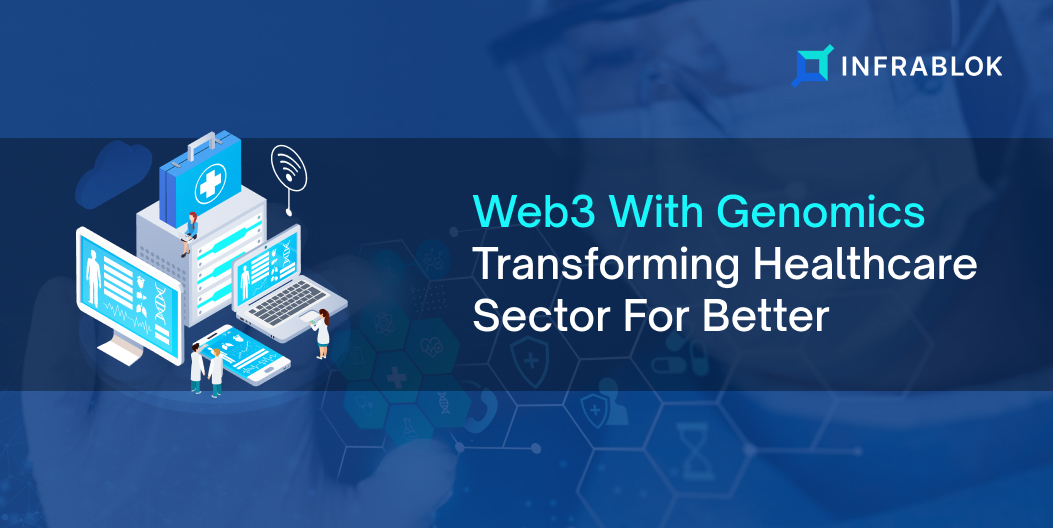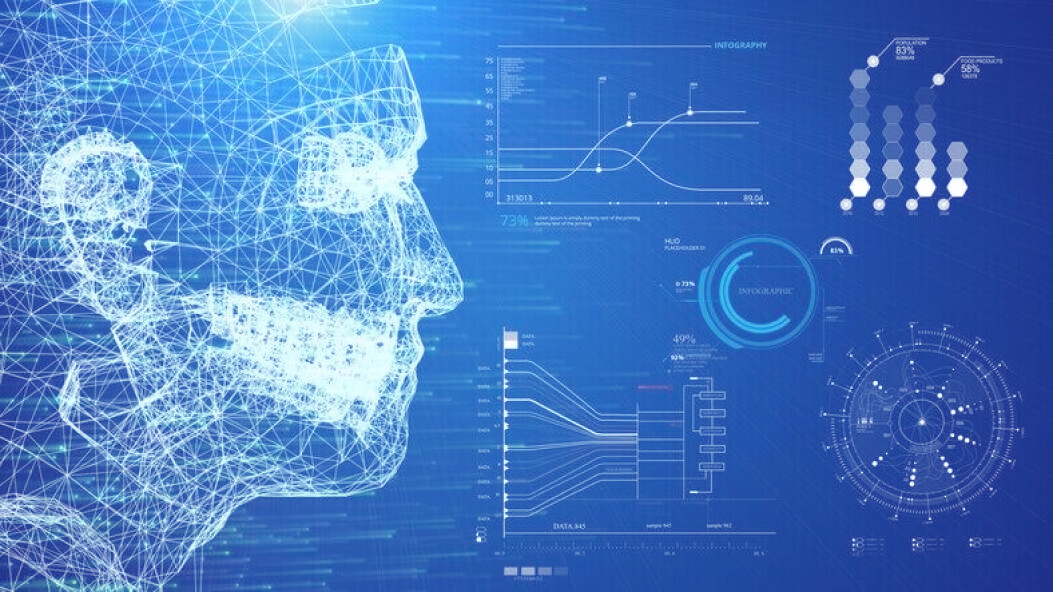The complete set of genes or genetic material present in a cell or organism is known as the genome. The study of the structure, function, evolution, and mapping of genomes is known as genomics. Genomics technology is the set of techniques and tools used to study an organism’s entire DNA sequence, including its genes and other genetic material. These technologies enable researchers to analyze and interpret the vast amount of genomic data generated from DNA sequencing technologies.
The vast amount of data needs to be handled securely and carefully, and that is where Web3 comes in. These two technologies are Genomics and Web3 handshake to keep the data secure and private yet maintain transparency to achieve innovations that can lead to better healthcare.
The Benefits of Combining Genomics And Web3 Technology

There are various benefits associated with using Genomics and Web3 Technologies; some of them are –
1. Security
Genomic data is highly sensitive and valuable and needs to be secured from unauthorized access or manipulation. Blockchain provides a secure and tamper-proof infrastructure for storing and sharing genomic data.
2. Privacy
Individuals who provide their genomic data for research need control over their data and privacy. Web3 enables individuals to maintain control over their genomic data and share it on a need-to-know basis while still receiving incentives for sharing their data.
3. Transparency
Using blockchain (Web3) in genomics enables transparent and auditable transactions of genomic data, ensuring that data is being used ethically and for its intended purpose.
4. Collaboration
Genomics research requires collaboration among researchers, clinicians, and other stakeholders. Web3 can facilitate collaboration by providing a decentralized infrastructure for secure and transparent genomic data sharing.
5. Innovation
Web3 can help to spur innovation in the field of genomics by enabling the creation of decentralized genomic data marketplaces, where individuals can sell their genomic data to researchers and companies, driving the development of new therapies and treatments.
With the key benefits listed above, Web3 technology helps in many ways in the field of genomics by providing it with a decentralized infrastructure for storing, sharing, and analyzing genomic data and facilitating secure and transparent transactions of genomic information.
Read More – Notion AI: A Short Guide To Boosting Business Productivity And Efficiency!
How Is Web3 Assisting Genomics Technology?
Here are a few examples that will let you understand how Web3 technology is helping genomics:
DNA Sequencing
It is the process of determining the order of nucleotides in a DNA molecule. There are different DNA sequencing technologies available, including next-generation sequencing (NGS) and third-generation sequencing (TGS) technologies.
Web3 can help in DNA sequencing by enabling the secure storage of large amounts of genomic data on a decentralized network, such as the blockchain. It can ensure that the data is tamper-proof and immutable while allowing for secure and easy data sharing among researchers and healthcare providers.
For example, Shivom is a blockchain-based genomics platform that uses Web3 technology to securely store and share genomic data.
Bioinformatics
Involves the use of computational tools and techniques to analyze and interpret genomic data. It includes data storage, retrieval, and analysis methods that allow researchers to make sense of the vast amount of genomic data generated from sequencing technologies.
Web 3.0 technology can also facilitate the development of decentralized bioinformatics tools and platforms, allowing researchers to analyze and interpret genomic data securely and transparently.
For example, EncrypGen has created a decentralized marketplace for genomic data called Gene-Chain, which uses blockchain technology to enable secure transactions of genomic information and provide transparent access to data for researchers and companies.
Genome Editing
Enables researchers to modify the DNA sequence of an organism. It can be used to study gene function, create disease models, and develop new therapies for genetic diseases.
Web 3 can help in genome editing by enabling the secure and transparent sharing of genetic data and the development of decentralized platforms for gene editing research.
For example, Nebula Genomics has developed a blockchain-based platform that allows individuals to share their genomic data securely and transparently for research while maintaining control over their data and privacy.
Functional Genomics
Is the study of how genes function and interact with each other. It includes techniques such as gene expression analysis, epigenetics, and proteomics.
Web3 can facilitate functional genomics research by providing a decentralized infrastructure for sharing and analyzing gene expression, proteomics, and other functional genomics data.
For example, Luna DNA has created a blockchain-based platform that enables individuals to securely share their genomic and health data for research purposes while ensuring that they maintain control over their data and receive incentives for sharing.
Genome-Wide Association Studies (GWAS)
Involves the analysis of genetic variations across large populations to identify genetic risk factors for complex diseases.
Blockchain technology can create decentralized GWAS platforms that enable researchers to analyze large amounts of genomic data securely and transparently.
For example, Zenome has developed a blockchain-based platform that allows individuals to share their genomic data and participate in GWAS studies while receiving incentives for sharing their data and contributing to research.
Wrapping Up
Web3 enabled the creation of decentralized genomic data marketplaces, where individuals can sell their genomic data to researchers, pharmaceutical companies, and other interested parties. These marketplaces incentivize individuals to share their data while ensuring that it is used ethically and transparently.
Moreover, it also facilitates the development of decentralized genomic applications, such as genetic testing and personalized medicine. These applications leverage the decentralized infrastructure to provide secure and reliable access to genomic data while enabling individuals to control their data and privacy.
Thus, the combination of Genomics technology and Web3 can revolutionize how we generate, share, and use genomic data, leading to improved healthcare outcomes, scientific discoveries, and economic benefits.
So, to make your healthcare business wiser, focus on developing software that includes Genomics and Web3 technologies. Additionally, to get innovative ideas related to it, get in touch with Infrablok experts!





